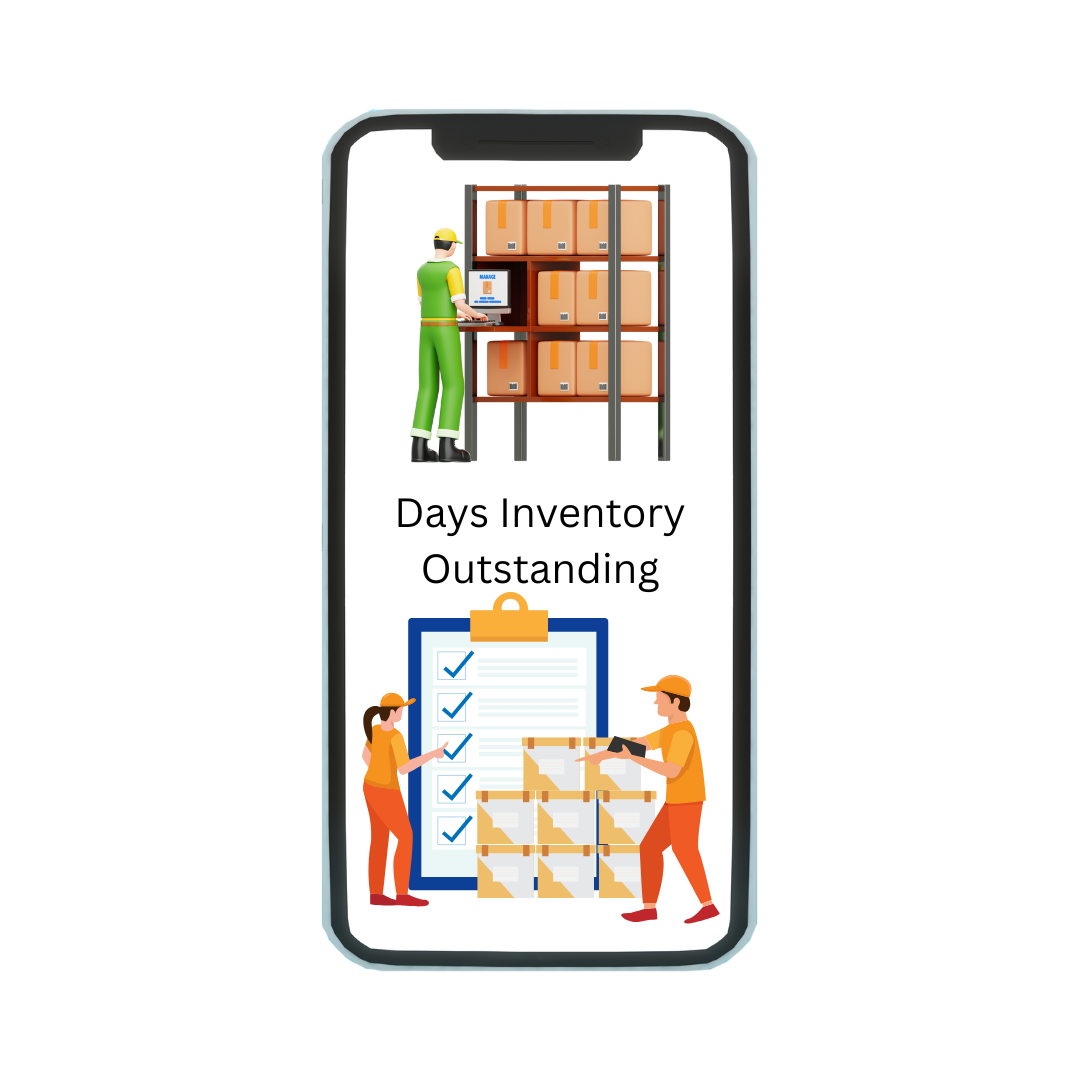The debt to equity ratio is a key financial metric used to assess a company’s financial leverage and overall risk. It compares the total liabilities of a company to its shareholders’ equity, providing insight into how much debt is used to finance the company’s assets relative to equity.
A higher ratio indicates greater reliance on debt, which can signal increased financial risk, particularly in volatile markets. Conversely, a lower ratio suggests a more conservative approach to financing, potentially leading to less risk during economic downturns. Understanding the debt to equity ratio is crucial for investors and stakeholders evaluating a company’s financial health and capital structure.
Calculating Debt to Equity Ratio
The Equity Ratio is a simple yet powerful metric that compares a company’s total debt to its shareholder equity—expressed as a formula:
Debt to Equity Ratio = Total Debt/Shareholder Equity
Understanding this ratio is crucial as it helps investors and analysts gauge the financial leverage and risk associated with a company.
Significance for Businesses
The significance of the Equity Ratio for businesses cannot be overstated. This financial metric is a crucial indicator of a company’s financial structure and decision-making strategy. Let’s explore why this ratio holds such importance in the business world:
- Financial Health Assessment:The Debt to Equity Ratio provides a snapshot of a company’s financial health. Businesses can gauge their level of financial leverage by comparing total debt to shareholder equity.
- Impact on Stability:A lower ratio typically suggests lower financial risk. Companies with a conservative approach to debt may enjoy more stability during economic downturns, which can reassure investors and creditors.
- Industry Benchmarks:Understanding the Debt to Equity Ratio is not just about the company itself; it’s about where it stands within its industry. Industry benchmarks help businesses assess whether their financial structure aligns with sector norms.
- Credit Terms and Interest Expenses:A lower ratio often translates to better credit terms and lower interest expenses. This is because creditors view companies with lower financial leverage as less risky borrowers.
- Strategic Decision-Making:Striking the right balance in the Equity Ratio is essential for strategic decision-making. When determining the optimal ratio, businesses must consider their growth plans, risk tolerance, and overall financial goals.
Advantages of a Low Debt-to-Equity Ratio
Maintaining a low Debt to Equity Ratio offers several advantages for businesses. This financial metric, comparing a company’s total debt to its shareholder equity, has far-reaching implications for financial stability and decision-making. Let’s explore the advantages of having a low Debt to Equity Ratio:
- Reduced Financial Risk:One of the primary advantages is a lower level of financial risk. Companies with a conservative approach to debt are less exposed to market fluctuations and economic downturns, providing a cushion against unforeseen challenges.
- Enhanced Stability:A low ratio contributes to more excellent financial stability. During turbulent economic times, companies with less debt face fewer challenges in meeting their financial obligations, instilling confidence in investors and creditors.
- Favorable Credit Terms:Businesses with a low Debt to Equity Ratio often enjoy more favorable credit terms. Lenders perceive these companies as lower-risk borrowers, resulting in lower interest rates and better loan conditions.
- Investor Confidence:Investors generally favor companies with lower financial leverage due to the perceived stability and reduced risk. A low Debt to Equity Ratio can attract long-term investors who prioritize steady growth and consistent returns.
- Flexibility for Strategic Decisions:Companies with minimal debt have more financial flexibility. This allows them to make strategic decisions without the constraints of heavy debt obligations, fostering adaptability in response to market changes or investment opportunities.
- Steady Dividend Payments:Lower financial risk associated with a low ratio often translates into consistent dividend payments to shareholders. Companies can allocate profits to dividends rather than servicing high debt levels, providing shareholders with reliable returns.
- Better Resilience in Economic Downturns:Companies with a low Equity Ratio are better positioned to weather the storm during economic downturns. They are less susceptible to financial distress, ensuring smoother operations even in challenging economic conditions.
- Improved Corporate Image:A low ratio contributes to a positive corporate image. Stakeholders, including customers and partners, often view financially stable companies more favorably, enhancing the business’s overall reputation.
Drawbacks of a Low Debt-to-Equity Ratio
While a low Debt to Equity Ratio has advantages, it also entails certain drawbacks that businesses must consider. This ratio, comparing a company’s total debt to its shareholder equity, reflects the financial structure and decisions made by the industry. Let’s explore the potential drawbacks of maintaining a low Debt to Equity Ratio:
- Limited Leverage Opportunities:Companies with a low Debt to Equity Ratio might miss out on leveraging opportunities that could amplify returns. Limited debt financing can restrict the business from undertaking projects that could enhance growth.
- Potential for Lower Returns:Since a low ratio signifies a conservative approach, the potential for higher returns might be constrained. Businesses may not capitalize on the financial leverage that debt can provide, resulting in a slower rate of return on equity for shareholders.
- Reduced Financial Flexibility:A low Debt to Equity Ratio may limit financial flexibility. During periods of growth or unforeseen opportunities, businesses with minimal debt might find fewer options for raising capital quickly.
- Competitive Disadvantage:In industries where competitors leverage debt strategically, companies with a low ratio may face a competitive disadvantage. Rivals with higher leverage might be more agile in pursuing expansion opportunities and gaining a competitive edge.
- Slower Growth Potential:Restricting the use of debt can lead to slower growth compared to competitors with higher leverage. While this approach minimizes financial risk, it may also hinder the business from capitalizing on favorable market conditions.
- Dependency on Equity Issuance:Companies with a low Equity Ratio might rely heavily on equity issuance to raise capital. This approach can dilute existing shareholder ownership and may not be as efficient as utilizing a mix of debt and equity.
- Missed Tax Benefits:Debt interest payments are often tax-deductible, providing businesses with a financial benefit. Companies with a low ratio miss out on these potential tax advantages, which can impact overall cost-effectiveness.
- Limited Capital for Share Repurchases:Share repurchases can be an effective way to enhance shareholder value. A low debt-to-equity ratio may limit the funds for such initiatives, potentially necessitating more opportunities to boost stock prices.
- Potential Perception of Risk Aversion:A consistently low ratio might lead investors to perceive the company as risk-averse. While this can attract confident investors, it may discourage those seeking higher-risk, higher-reward opportunities.
Advantages of a High Debt-to-Equity Ratio
Maintaining a high Debt to Equity Ratio comes with its advantages for businesses. This financial metric, comparing a company’s total debt to its shareholder equity, reflects the level of financial leverage. Let’s explore the potential advantages of having a high Debt to Equity Ratio:
- Increased Financial Leverage:One of the primary advantages of a high Debt-to-equity ratio is increased financial leverage. This means that the business is utilizing debt to finance its operations and investments, potentially leading to higher shareholder returns on equity.
- Potential for Higher Returns:Companies with a high ratio can leverage debt strategically to amplify returns. Using borrowed funds to finance projects or expansions, businesses may achieve higher profitability, increasing shareholder returns.
- Amplified Earnings Per Share (EPS):Debt financing can contribute to higher earnings per share (EPS). As the cost of debt is often lower than the return on equity, leverage can result in an amplified EPS, making the company more attractive to investors.
- More excellent Growth Opportunities:A high Equity Ratio gives businesses the financial flexibility to pursue ambitious growth opportunities. Leveraging debt allows companies to undertake projects that might otherwise be unfeasible with limited equity financing.
- Enhanced Shareholder Value:By judiciously employing debt, companies can enhance shareholder value. The potential for higher returns and increased profitability can positively impact stock prices, attracting investors seeking growth and higher yields.
- Tax Deductibility of Interest Payments:Interest payments on debt are often tax-deductible. Companies with a high Equity Ratio can take advantage of this tax benefit, reducing their overall tax liability and improving cost efficiency.
- Optimized Capital Structure:Maintaining a high ratio allows businesses to optimize their capital structure. Striking the right balance between debt and equity ensures that the cost of capital is minimized, maximizing the company’s overall value.
- Efficient Use of Resources:Debt financing enables businesses to utilize external funds efficiently. This can be particularly advantageous when limited internal resources allow the company to undertake projects that contribute to long-term growth.
- Flexibility in Capital Allocation:A high Debt-to-equity ratio provides greater flexibility in capital allocation. Companies can allocate resources strategically, balancing debt and equity to meet short-term obligations while investing in long-term growth initiatives.
- Potential for Higher Stock Prices:The increased earnings and growth potential associated with a high ratio can lead to higher stock prices. Investors looking for capital appreciation may find companies with a high Debt to Equity Ratio appealing.
Drawbacks of a High Debt-to-Equity Ratio
While a high Debt to Equity Ratio can offer certain advantages, it also carries inherent drawbacks and risks that businesses must carefully consider. This financial metric, comparing a company’s total debt to its shareholder equity, reflects the level of financial leverage. Here are some potential drawbacks of maintaining a high Debt to Equity Ratio:
- Increased Financial Risk:One of the primary drawbacks is the heightened financial risk. Companies with a high ratio face greater vulnerability, especially during economic downturns or unexpected events, as servicing high debt levels becomes challenging.
- Higher Interest Expenses:A high Equity Ratio often means higher interest expenses. Companies must allocate a significant portion of their earnings to service debt, potentially impacting overall profitability and reducing funds available for other essential activities.
- Strain on Cash Flow:Heavy reliance on debt can strain a company’s cash flow. High interest payments may limit the funds available for day-to-day operations, capital expenditures, or strategic investments, leading to potential liquidity challenges.
- Credit Rating Impact:Maintaining a high ratio can negatively impact a company’s credit rating. Credit rating agencies may view businesses with substantial debt as having higher credit risks, resulting in higher borrowing costs and more stringent lending terms.
- Potential for Financial Distress:In adverse economic conditions, companies with a high Debt to Equity Ratio may face the risk of financial distress. Difficulty meeting debt obligations can lead to downgraded credit ratings, increased scrutiny from creditors, and, in extreme cases, bankruptcy.
- Limited Strategic Flexibility:High debt levels can limit a company’s strategic flexibility. Due to the constraints imposed by heavy debt obligations, businesses may need help to adapt to changing market conditions, pursue new opportunities, or withstand unexpected challenges.
- Negative Impact on Stock Prices:Investors may react negatively to a high Debt-to-equity ratio. Concerns about financial stability and the ability to service debt can lead to declining stock prices, potentially eroding shareholder value and investor confidence.
- Constraints on Future Borrowing:Maintaining a high ratio can limit a company’s borrowing ability. Lenders may hesitate to extend additional credit, especially if the existing debt burden is perceived as too high.
- Impact on Dividend Payments:Companies with a high Debt to Equity Ratio may allocate a significant portion of profits to debt servicing, limiting the funds available for dividend payments. This can affect shareholder returns and attractiveness to income-focused investors.
- Market Perception of Risk:A consistently high ratio may contribute to a perception of elevated risk. This can impact the company’s ability to attract investors and may result in higher costs of equity capital.
Determining an Optimal Debt-to-Equity Ratio
Determining the optimal Equity Ratio is a nuanced process that requires careful consideration of various factors. This financial metric, comparing a company’s total debt to its shareholder equity, plays a crucial role in shaping its economic structure. Here’s a guide on how businesses can determine the optimal Debt to Equity Ratio:
- Industry Considerations:Optimal ratios vary across industries. Some sectors, such as technology, may tolerate higher leverage, while others, like utilities, might prefer a more conservative approach. Analyzing industry benchmarks helps contextualize what is expected within a specific business environment.
- Risk Tolerance:Assessing the company’s risk tolerance is critical. Businesses with a higher risk appetite might be comfortable with a higher Debt to Equity Ratio, allowing them to leverage debt for potentially higher returns. Conversely, risk-averse companies may opt for a more conservative approach.
- Company Life Cycle:A company’s life cycle influences its optimal ratio. Young, growing companies may tolerate higher leverage to fuel expansion, while mature companies with stable cash flows might lean towards lower ratios for stability and consistent returns.
- Market Conditions:Economic conditions and market dynamics play a pivotal role. During periods of economic growth, companies might leverage debt to capitalize on opportunities, while economic uncertainties may prompt a more conservative stance.
- Cost of Debt vs. Cost of Equity:Comparing the cost of debt to the cost of equity is crucial. If the price of debt is lower than the expected return on equity, it might be advantageous to leverage debt for higher profitability. However, if the price of debt is high, a lower ratio might be more prudent.
- Company Objectives and Strategy:Aligning the Equity Ratio with the company’s objectives is essential. If the goal is aggressive expansion, a higher ratio might be suitable. If stability and steady growth are prioritized, a lower percentage may align more with the business strategy.
- Market Perception:Consider how the market perceives the company’s financial structure. Investors, creditors, and other stakeholders may have expectations based on industry norms. Straying too far from these expectations could impact the company’s access to capital and stock performance.
- Regulatory Environment:The regulatory environment can influence the optimal ratio. Certain industries or regions may have specific regulations or limitations on the level of debt a company can carry. Adhering to these regulations is crucial for legal compliance.
- Cash Flow and Liquidity:Assessing the company’s cash flow and liquidity is vital. High debt levels can strain cash flow, impacting the ability to meet short-term obligations. Maintaining a balance that ensures operational flexibility is essential for long-term sustainability.
- Long-Term Financial Goals:Aligning the Equity Ratio with long-term financial goals is paramount. Whether the aim is to maximize shareholder value, achieve sustainable growth, or ensure financial stability, the chosen ratio should support these overarching objectives.
How Investors View Debt to Equity Ratio
Investors view the Debt to Equity Ratio as a critical indicator of a company’s financial health and risk. A lower ratio is often seen favorably, suggesting stability and lower financial risk. On the other hand, a higher ratio may signal the potential for higher returns but is accompanied by increased risk. Investors use this ratio to assess a company’s ability to meet its financial obligations, make informed decisions based on risk tolerance, and gauge the overall attractiveness of an investment. It is a crucial factor influencing investor confidence, stock prices, and long-term investment decisions.
Impact on Creditworthiness
The Equity Ratio significantly influences a company’s creditworthiness. A lower ratio is generally perceived positively, indicating lower financial risk, often leading to more favorable lending terms. In contrast, a higher ratio may raise concerns among creditors, potentially resulting in higher borrowing costs and stricter lending conditions. Credit rating agencies use this ratio to assess the risk associated with providing loans, and a favorable Equity Ratio can enhance a company’s creditworthiness, making it more attractive to lenders and potentially lowering the cost of borrowing.
Conclusion
In conclusion, the Equity Ratio is a pivotal metric shaping the financial landscape of businesses. Its intricate dance between risk and return underscores the delicate balance companies must strike to ensure sustainable growth and resilience. Whether navigating the fine line between leveraging opportunities for higher returns or adopting a more conservative approach for stability, the optimal Equity Ratio remains a nuanced decision influenced by industry dynamics, risk appetite, and broader economic conditions. Investors scrutinize this ratio for insights into a company’s financial health, while creditors use it to gauge creditworthiness. As businesses traverse the ever-evolving terrain of the market, thoughtful consideration of the Debt to Equity Ratio is paramount, guiding strategic decisions and ultimately defining the trajectory of long-term success.






